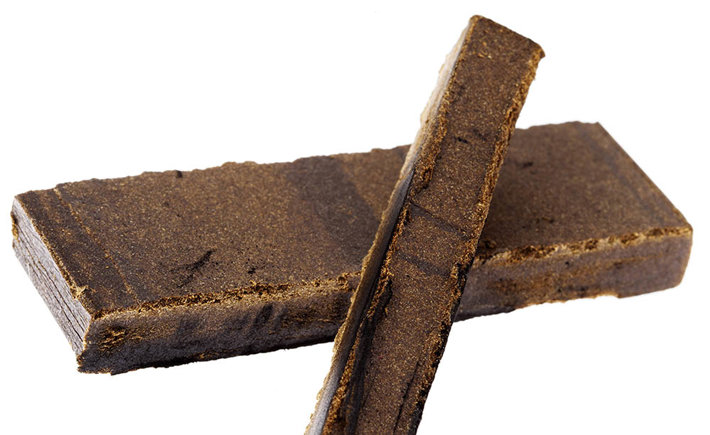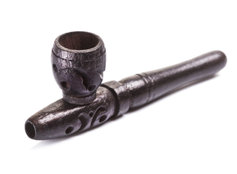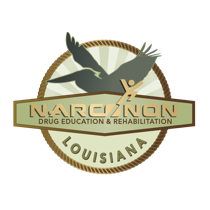Signs and Symptoms of Hashish Use

Dried and crumbled leaves and flowers of the cannabis plant are called marijuana in the United States and known as cannabis most other places. Resins from the cannabis plant collected and compressed into sticks, balls or blocks are called hashish. Hashish is most often a hard, dry, crumbly substance, usually brown but sometimes dark yellow. It can also be an oily, almost black block of material.
In this form, the intoxicating ingredient in cannabis, tetrahydrocannabinol, or THC, is concentrated. Therefore smaller amounts are needed to produce effects similar or stronger to those of cannabis/marijuana.
Hash oil is another form of the drug. It comes in small glass bottles and may range in color from amber to dark brown. A drop or two is placed on a cigarette before it is smoked.
Hashish is not in widespread use in the United States, but it is heavily used in some parts of Canada and Europe. In 2011, the Royal Canadian Mounted Police reported that they had participated in a worldwide operation that seized 43 metric tons of hashish destined for Montreal and Halifax.
In Asia and Northern Africa, hashish has been used since ancient times and is still used today. The majority of the world’s hashish originates from Morocco.
Using Hashish

Hashish is mostly smoked, so a person who abuses hashish may leave behind crumbly brown or almost black powder or a gummy resinous substance, small pipes or other paraphernalia. Some people roll hashish into cigarettes, heating hash with a flame and then breaking it up into a fine consistency. It is then mixed with herbs or tobacco and smoked. So a person abusing hashish this way could leave behind lighters, rolling papers and small unsmoked ends of the hand-rolled cigarettes.
Hashish can also be eaten, but some people consider it is easier to get the correct dose and therefore the desired effect when it is smoked. It can be mixed into baked items, particularly brownies.
Common Signs of Hashish Use
Like cannabis, hashish acts somewhat as a sedative, causing a mellow, relaxed feeling. Unfortunately for those who habitually abuse this drug, it is also addictive and causes other symptoms that are undesirable.
Other signs include:
- Drowsiness
- Loss of an accurate time sense
- Partial loss of or reduction in short-term memory
- Loss of ability to concentrate and complete tasks
- Lowered coordination
- Impaired ability to carry out complex tasks such as driving due to distortions in time and space perceptions
- Reduced comprehension and ability to learn
- Lowered inhibitions
- Impaired judgment
- Lowered ability to listen accurately and think clearly
- An “I don’t care” attitude
- Slow speech
- Lowered motivation
This last sign is one of the most defining characteristics of cannabis or hashish use. When young people abuse cannabis or hashish, they tend to drop their prior interests, such as clubs, educational and career goals, in favor of the dreamy relaxation of cannabis intoxication.
Hashish can make it difficult to learn and solve problems, and the alteration of time and space perceptions can impair a person’s ability to be successful at sports. As a result, a young person who was an athlete and scholar before hashish use may drop out of his sports activities. Their grades may drop markedly as well.
See also our page about Effects of Hashish.
When looking for physical signs of hashish use, you would look for bloodshot eyes, dry mouth, and increased cravings for snacks or drinks.
A person who is a heavy user of hashish or cannabis can develop paranoia and hallucinations. Long-term users can become dependent on the drug. If a person continues to abuse any substance despite suffering damage to life, health or relationships, they can be considered abusers of the drug. If they also develop a tolerance (meaning that more of the drug must be consumed to get the same effects as before) and withdrawal symptoms when they quit using it, they are considered dependent. Cannabis does have withdrawal symptoms if the drug is discontinued.
These include:
- Disturbed sleep
- Hyperactivity
- Reduced appetite
- Irritability
- Stomach problems and pain
- Sweating and shakes
When a person takes too much hashish, they can experience aggression, anxiety, confusion, panic, immobility and heavy sedation.
Eliminating Hashish Addiction
Cannabis products are dangerous, addictive drugs in their own right, and for some, they are stepping stones to heavier drug use. If a person becomes addicted to any form of cannabis, immediate recovery through an effective rehabilitation program can prevent the need for rehabilitation from addiction to heroin, prescription painkillers, cocaine or other drugs.
Learn about the sauna detoxification program that enables a person to flush out stored drug toxins that can be involved in triggering cravings. For cannabis in particular, intoxicating components can become stored in fatty tissue, causing lingering symptoms of marijuana or hashish use, even weeks or months after use stopped. By combining time in a sauna with nutritional supplements and moderate exercise, the body’s ability to get rid of old drug residues is activated. A person who craved the drug so badly that continued abuse was a necessity can find sobriety at last, after completion of this rehab program.
If you want to help someone who is addicted to hashish or cannabis, contact Narconon.
Resources:
